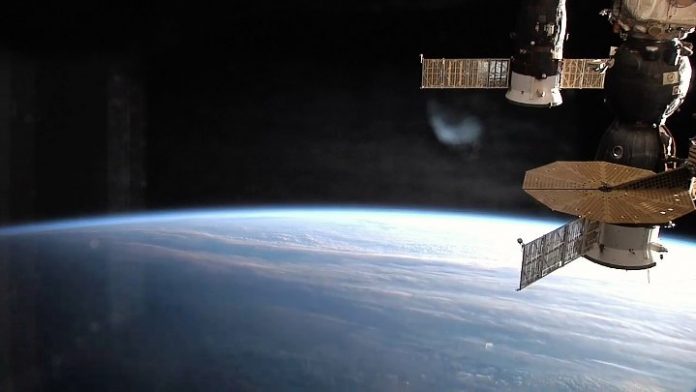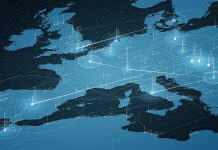Here, Open Access Government probes how the National Science Foundation in the U.S. supports extending intellectual frontiers in the atmospheric and geospace sciences
Within the National Science Foundation (NSF) in the U.S., we find, for example, the Division of Atmospheric and Geospace Sciences (AGS). The mission of the AGS is an impressive one and includes extending intellectual frontiers in atmospheric and geospace sciences. To achieve this aim, the development of technology, responsible investments in fundamental research and education are required to “enable discoveries, nurture a vibrant, diverse scientific workforce, and help attain a prosperous and sustainable future.”
Elaborating on the theme of fundamental research, we know that the AGS supports “the areas of physical, chemical, and biological processes that impact the composition and physical phenomena and behaviour of matter between the sun and the surface of the Earth” which incorporates a wide array of crucial processes that impact humans and society, like space weather events, air quality, climate and tropospheric weather events.
It is also worth noting here that the AGS sets out to inspire and encourage “a diverse new generation of scientific leaders” by enhancing educational opportunities and experiences, supporting early-career faculty and, of course, promoting engagement with the atmospheric and geospace sciences.
Also, the AGS consists of three parts, the Atmosphere Section, the Geospace Section, and the NCAR and Facilities Section. Taking the example of the Geospace Section, we know that this is made up of Space Weather, Magnetospheric Physics, Solar and Heliospheric Physics, Aeronomy and Geospace Facilities programmes. (1)
Atmospheric and geospace sciences research
Let’s have a look now at some tangible examples of how the AGS is supporting research in the field. Before we do that, however, it’s important to note that the NSF, which has many divisions, finances research, plus education in science and engineering, through contracts, grants and cooperative agreements. (2) Global Modeling of Plasma Plumes in the Equatorial Upper Atmosphere is one such example, and part of this concerns “a wide range of scales from equatorial plasma bubbles of tens of km in size to meter-scale irregularities in the plasma density.” (3) Research in the field reflects the NSF’s wider mission since 1950 “to promote the progress of science; to advance the national health, prosperity, and welfare; to secure the national defense.” (4)
In more recent research news from the AGS, we discover that University of Iowa-led research identifies a climate system in East Asia that could influence how often tropical storm development occurs in the Atlantic Ocean. In research supported by the NSF, we discover that a stronger East Asian Subtropical Jet Stream (EASJ) is linked with fewer Atlantic tropical cyclones. Commenting on this, Laura Lautz, Program Director in the NSF’s Division of Earth Sciences explains her thoughts on the importance of hurricane research. “These findings help us understand why some seasons have more frequent hurricanes than others, and they reduce uncertainties in predictions for the future,” she says. (5)
In other news, we learn about the NSF-funded study published by Colorado State University atmospheric scientists about settling the debate and making climate models better when it comes the extent of black carbon’s impact on cloud. Nick Anderson, from the NSF’s Division of Atmospheric and Geospace Sciences, commented, “The results from this study should help weather and climate models more accurately simulate the impact of black carbon emissions from wildfires on cloud development.” (6)
In August, we find out about how scientists created the world’s most detailed tornado simulations. We can ponder open questions when it comes to such widespread devastation like “how do tornadoes form?” and “can they be predicted early enough to provide timely warnings to the public?” “For about two out of three times when there’s a tornado warning issued, there’s no tornado,” comments Leigh Orf, a U.S. NSF-funded Atmospheric Scientist at the University of Wisconsin-Madison. “We need to do better for people to heed these warnings,” he adds. Chungu Lu from the NSF’s Division of Geospace and Atmospheric Sciences adds that computer modelling is “a powerful tool in aiding scientists to understand how tornadoes are generated from their parent storms.” (7)
One final example of research in the field goes back to December 2019 and concerns how “computers can learn to find solar flares in vast streams of images and help scientists issue timely space weather alerts.” (8) Marcus Hughes, from CU Boulder, made a computer algorithm that can “look at all the Solar Ultraviolet Imager images simultaneously and spot patterns in the data,” we read on the NSF’s informative website. “We need tools to process solar data in digestible chunks,” Dan Seaton, one of the paper’s co-authors comments. (9)
Supporting research and people
These examples of research perfectly illustrate the NSF’s crucial role as an independent federal agency that supports research and people “to create knowledge that transforms the future.” We need to bear in mind the NSF’s wider aim to support all fundamental areas of science and engineering, medical sciences excluded. We wish the AGS well as they continue to support research and researchers in the field of atmospheric and geospace sciences and many other intellectually stimulating areas. (10)
References
- https://www.nsf.gov/geo/ags/about.jsp
- https://www.nsf.gov/awards/about.jsp
- https://www.nsf.gov/awardsearch/showAward?AWD_ID=1931415&HistoricalAwards=false
- https://www.nsf.gov/about/
- https://www.nsf.gov/discoveries/disc_summ.jsp?cntn_id=301045&org=AGS&from=news
- https://www.nsf.gov/discoveries/disc_summ.jsp?cntn_id=301151&org=AGS&from=news
- https://www.nsf.gov/discoveries/disc_summ.jsp?cntn_id=301102&org=AGS&from=news
- https://www.swsc-journal.org/articles/swsc/abs/2019/01/swsc180074/swsc180074.html
- https://www.nsf.gov/discoveries/disc_summ.jsp?cntn_id=299753&org=AGS&from=news
- https://www.nsf.gov/about/











